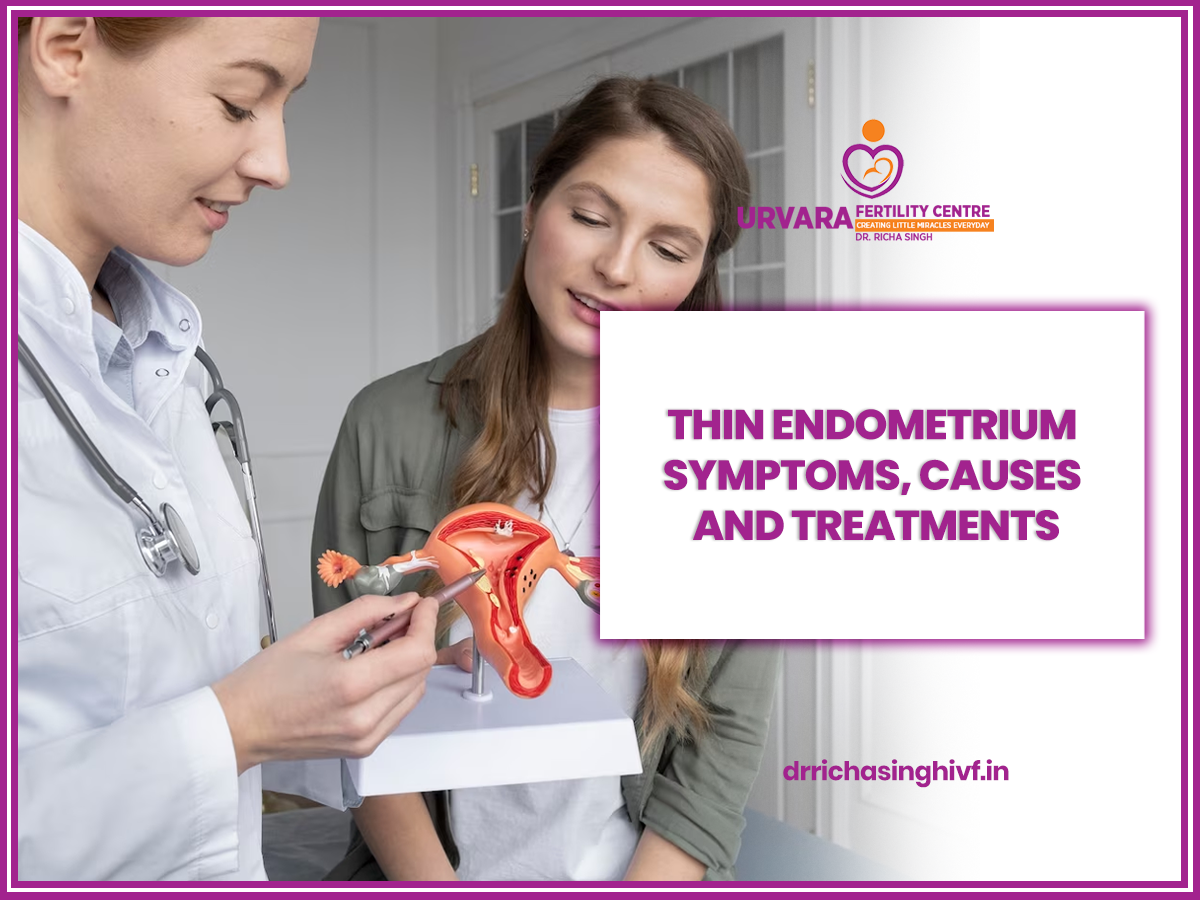Thin Endometrium Symptoms, Causes and Treatments
You might be wondering how thin endometrium lining can impact your fertility or whether
there are any symptoms of it. We are here to answer all these queries which are jumping
into your mind. The endometrium is the inner lining of the uterus that changes during
the menstrual cycle. A thin endometrium lining means an abnormally thin lining of the
uterus, which can be the barrier to the implantation of a fertilized egg.
It also plays an important role during pregnancy. Some women face challenges during
conception due to thin endometrium. The uterus lining must be approximately 8mm thick to
implant an embryo successfully and the endometrium lining called thin when it is less
than 7 mm. Let’s explore what are the symptoms, causes, and treatments of thin
endometrium.
Does Thin Endometrial Lining Impact Your Fertility?
A thin endometrial lining can impact your chances of conception. The endometrium provides the necessary surroundings for the embryo to implant and for its development whereas thin lining may pose problem as it does the optimal conditions for successful and difficulty to conceive or recurrent IVF failures. In such cases, couples can take the advice of a Fertility specialist in Lucknow to increase the chances of successful implantation of the embryo. Women may need to undergo multiple rounds of IVF if they have a thin endometrial lining.
What are the Symptoms of Thin Endometrium?
Symptoms of thin endometrium are abnormal menstrual bleeding, difficulty in conceiving, recurrent miscarriages, and irregular menstrual cycles.
What are the Causes of Thin Endometrium?
There are many causes of the thin endometrium lining. Some of them are hormonal
imbalance, age, uterine infections, and more. Let’s explore each one of them. So,
hormonal imbalances create fluctuations in estrogen and progesterone levels that affect
endometrial thickness. As women age, the endometrial lining may naturally thin out but
uterine infections or inflammations can also damage the endometrial lining and make it
thin. Tubercular infection is the most common cause of infertility leading to damaged
endometrium.
Not only this but surgical procedures like D&C on your uterus can also cause thinning of
the endometrium. Specially if it is vigorous or repeated ones leading to Asherman’s
syndrome.
How is Thin Endometrium Diagnosed?
To diagnose thin endometrium there are some ways such as transvaginal ultrasound. It is the most common diagnostic tool for analyzing the endometrial thickness. On ultrasound it appears to be thin line and sometimes small vacuolated appearances in between endometrium adhesions.
What are the treatments for Thin Endometrium?
1. Hormonal Therapy
Hormonal medications like estrogen and progesterone help endometrial growth. These medications promote the proliferation of endometrial cells and the development of blood vessels within the endometrium.
2. Platelet-rich Plasma (PRP)
This is a treatment under review to help refractory patients of thin endometrium. This is an autologous blood plasma that is rich with platelets 4-5 times above normal. It can stimulate proliferation and regeneration. It also enhances endometrial growth and its thickness. PRP can be infused into the uterus to increase the endometrial thickness by a fine cannula.
3. Endometrial Scratch
It is a minor process through which the endometrial lining is gently scratched to
stimulate growth. During this process, the lining of the womb is scratched with the help
of a small sterile plastic tube. Some studies also suggest that endometrial scratching
increases the chances of getting pregnant.
In this process, the body repairs the scratch site by releasing chemicals and
hormones
that make the endometrial lining more receptive to embryo implantation. Endometrial
scratching is offered to women who fail to become pregnant even after several rounds
of
the IVF process. With the help of the Infertility
Center in Lucknow, couples can explore
more about the endometrial scratching process.
4. Specific supplements
Consuming certain supplements like vitamin E, L-arginine, CoQ10, and others can help the endometrial lining to grow. These supplements also increase pelvic blood flow. L-arginine is also present in red meats, fish, whole grains, and other foods.
5. Lifestyle Changes
Many studies cite that a healthy and well-balanced diet can positively impact endometrial health. According to researchers, the food you eat helps in increasing blood flow to the uterus and reproductive organs. You should eat Iron-rich foods like beets, spinach, beans, and pumpkin seeds, and foods that enhance the absorption of iron such as strawberries, tomatoes, and green peppers. A poor diet is also linked with endometrial conditions such as endometriosis and a healthy balanced diet can support endometrial growth.
Conclusion
The endometrium is the inner lining of the uterus. In endometrial lining the embryo implants at the start of pregnancy, and your baby’s growth and development take place. A thin endometrial lining is not suitable for embryo implantation and having a healthy endometrial lining is necessary for your embryo development.
